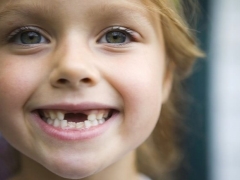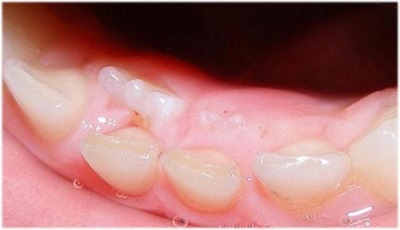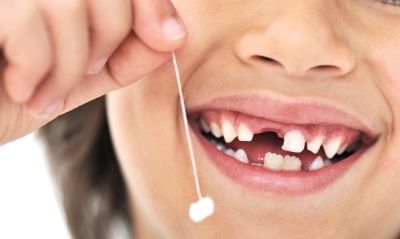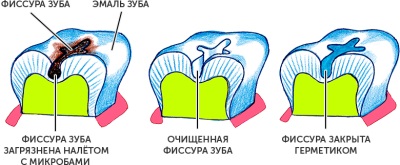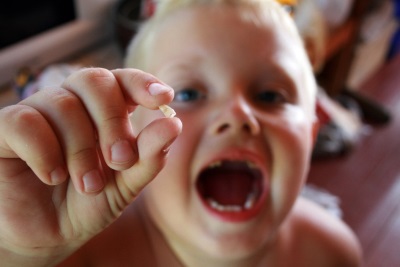What teeth do children have?
By 2-2.5 years, most twenty milk teeth erupt in most babies. After that, the parents will have a quiet period when no changes occur in the baby’s mouth. But after a few years, they begin to stagger and fall out in turn, freeing up space for the indigenous ones. How exactly does this process take place and what is important for parents to take into account during physiological tooth change in children?
How many changes from dairy to indigenous?
All milk teeth, which number twenty, normally fall out so that permanent ones appear in their place, which are called for their strong long roots indigenous. Wherein Permanent teeth erupt more than milk teeth, because babies also have an additional 2 pairs of chewing teeth. As a result, in childhood, instead of 20 milk teeth, 28 permanent teeth erupt.
There should be 32 teeth in total, but the last four can start cutting later, and for some people it does not appear at all, remaining in the form of rudiments in the gums.
Scheme: what and at what age change to permanent?
- The beginning of the shift is noted in most children at the age of 5-6 years old, when a child has its first molars. For their location in the dentition, they are called the "sixth tooth". Simultaneously, from the age of 5, the resorption of the roots of the milk incisors begins, a little later - the roots of the lateral incisors, and in 6-7 years - the roots of the first molars. This is a long process, taking an average of 2 years.
- In 6-8 years old children have a change of central incisors. First, a pair located on the lower jaw drops out, after which, on average, in 6-7 years, permanent incisors appear in their place, which are distinguished by their large size and the presence of a wavy edge. A little later, the central incisors located on the upper jaw fall out. The average term for the eruption of permanent teeth in their place is 7-8 years.
- Next comes the period of change of the lateral incisors. On average, they fall out at 7-8 years of age - first, the upper, and then on the lower jaw. Then the lower pair of permanent lateral incisors begins to erupt, and at 8-9 years similar teeth appear on the upper jaw. Also at the age of 7-8 years begins the process of resorption of the roots of the second molars and canines, which lasts an average of 3 years.
- The next four "four". They are called the first molars, but after they fall out, which, on average, is celebrated at the age of 9-11 years, the teeth, which are called the permanent first premolars, “bite” in their place. The first molars fall out first in the upper jaw, and then comes the turn of the lower teeth. However, permanent teeth in their place do not hurry to cut through, giving way to fangs.
-
At the age of 9-12 years old children have milk fangs - first, the upper, popularly called "eye teeth", and then the lower. Permanent canine teeth start at 9 years of age. Such teeth first appear on the lower jaw at the age of 9-10, and at the age of 10-11 the upper permanent canine teeth are also cut.
-
At the age of 10 to 12 years old, the first premolars of the child simultaneously erupt (the fourth permanent teeth) and the second molars fall out (the fifth milk teeth), after which the second premolars are cut (the fifth permanent teeth). The last four milk teeth falls first on the lower jaw, and then on the top. After that, only permanent teeth remain in the child's mouth. Lower permanent “fours” appear on average in 10-11 years, and in the period from 10 to 12 years premolars (fourth and fifth pairs of teeth) are cut in the upper jaw. At 11-12 years old, they are complemented by a lower pair of second premolars.
-
The second molars are cut last in childhood (on average, from 11 to 13 years old)called "sevens". At the age of 11-12, they erupt into the lower jaw, and at the age of 12-13, the upper sevens appear.
-
Third molars, also called “eights” or “wisdom teeth,” appear later than all other teeth. This is often observed at the age of 17 years.
Dialogue with S. Serbina, pediatric orthodontist, see the presented video:
How old do they change?
Changing teeth in children lasts a long time, starting at 5-6 years. In some children, it ends before adolescence, but in most cases only 28 permanent teeth are cut by the age of 16-17. Wisdom teeth erupt much later.
Are those that do not change?
If we are talking about baby teeth, then they all change permanently. Some parents consider chewing teeth, which are erupted by the child as the last (“fours” and “fives”) constant and think that they will not change. However, this is not the case, and the fourth and fifth baby teeth on each side of the jaw should drop out on all babies, and in their place appear permanent, which are called "premolars".
Do molars change in children?
Since permanent teeth are called molar teeth, which are erupted in children by milky ones, Normally they should not fall out. They remain with the children until the end of life.
Oral hygiene during the shift
While the child's teeth are changing, it is very important to carefully and regularly take care of the oral cavity, since New tooth enamel is poorly mineralized and vulnerable to negative external influences.
The child should clean them twice a day using a suitable toothbrush, as well as a properly selected toothpaste. It is also advised to use special rinses and dental floss.
Tips
- In order for the teeth that are cut to replace dairy ones to be strong and healthy, it is important to pay attention to the diet of the child during this period. There should be enough foods in the menu that contain calcium and vitamin D. It is important to give the child solid food, such as apples or carrots, so that the teeth are cleaned and strengthened in the course of chewing in a natural way.
- One should not worry that by the age of 5-6 years old gaps appeared between the milk teeth.. This is a normal process, as the molars are larger, and the child’s jaw grows so that there is enough space for them. On the contrary, if there are no gaps to this age, the child should be taken to the dentist.
- Remember that the most common problem is caries. Its occurrence is caused by various factors, among which hygiene and nutrition play an important role. Try to limit the sweet dishes in the child’s menu and regularly go with your child to the doctor to identify this disease in the early stages when it is not necessary to drill and fill teeth.
- As a rule, permanent teeth are cut without painful sensations. If the child is worried about the pain, you can use an anesthetic gel, used when teething milk teeth, but it is best to go to the doctor with your son or daughter and make sure that the process of eruption proceeds normally.
- If the tooth is loose, it can be pulled out at home. To do this, wrap it with a piece of sterile gauze, shake it to the side and pull it down or up. If he does not give in, postpone the procedure or go with the baby to the doctor.
- Since the enamel of the teeth that just erupted is not strong enough, The first permanent teeth that appear are often affected by caries. "Sixes" are subject to this not only because of early eruption, but also because of the presence of fissures - depressions on the chewing surface, from which it is difficult to remove plaque. To protect the procedure is often used, called the sealing of fissures. If you want to perform it to your child, take the baby to the dentist as soon as the chewing surface of the sixth teeth is completely free of gums.
- Remember that all terms of falling out and teething are averaged. For each particular child, they may differ, so with small deviations there is no reason to worry. If the loss of a tooth or the appearance of a permanent one in its place is strongly delayed, go to the dentist.
- One of the very common problems of the shift period is the curvature of the cutting permanent teeth. If their position is wrong, take the child to a consultation with an orthodontist. The use of special tools will help them align.
Watch the transfer of Dr. Komarovsky.
